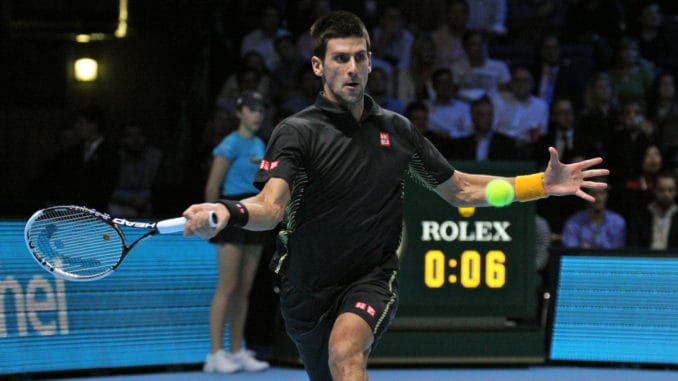
Questions have been asked of the ATP following Tuesday’s events at the US Open which saw no fewer than five men retire from their first round matches because of the events of heat.
On August 28, the second day of the competition, the temperatures at Flushing Meadows soared above 38 degrees Centigrade and humidity levels exceeded 50% and organisers were forced to adopt an extreme heat policy for the first time.
Among those forced to quit was Russian Mikhail Youzhny, who is set to retire soon, but whose final Grand Slam event saw him depart not in a blaze of glory, but in excruciating pain with cramp.
Another one to suffer in his opening US Open round match was Novak Djokovic who got through his match with Latvia’s Melon Fucsovics, but, who, afterwards, revealed that the two players spent the enforced break in the match sat side-by-side naked in ice baths.
The extreme heat rule allows players to take a ten minute break at defined times if either or both players want it. In the case of women, the break is taken between the end of the second and third sets; for men at the end of the third set.
However, whilst the WTA has a firm policy on this, the ATP takes a more discretionary attitude, deciding on a case by case basis. This has led to calls for some for the ATP to follow the WTA example, and adopt a more stringent approach.
Djokovic might not have been pointing fingers at the ATP but he made it a point to thank the USTA for their decision to allow them a break in the match. He said:
“I want to thank the US Open for allowing us to have the 10-minute break because we both needed it. But we were not allowed to talk to any of our team in the locker room.”
It needs to be remembered that elite tennis players are all extremely fit, and for so many of them to become unwell under such conditions should be a cause for concern.
It also does the tournament no good to have such a level of withdrawals, whilst, it can also be argued, those forced to play in the heat of the day are put at a disadvantage to those who are scheduled to play in the evening, not just in terms of match conditions, but also in terms of subsequent recovery time.
Temperatures in the high 30s are by no means unknown in New York in August, nor are high humidity levels. Tournament organisers have access to the same weather forecast information as anybody else, and should be able to predict, with a high degree of certainty, when conditions are likely to be dangerous.
In such cases, it should not be beyond their ability to move start times back to such times as the heat is more bearable. Otherwise, there could come a time when a player becomes seriously ill in the name of entertainment.
Be the first to comment